“Absolutely gutted.”
That was Mark Andrews‘ candid reaction after dropping a two-point conversion in the final two minutes of the Ravens‘ divisional-round playoff game against the Bills last season. Down 27-25 and with everything on the line, All-Pro quarterback Lamar Jackson rolled out on a snowy field and delivered a catchable pass to the three-time Pro Bowl tight end.
His drop effectively ended Baltimore’s Super Bowl hopes.
A week later, in the AFC Championship Game, the Bills went for two twice — in the second and third quarters — and missed both times, ultimately losing to the Chiefs by three points.
And there went Buffalo’s Super Bowl hopes.
In Week 18, two playoff teams lost on fourth-quarter two-point conversion fails. The Packers missed a chance to tie with 4:28 left against the Bears, and the Rams lost to the Seahawks. And Washington’s surge into the postseason included a December win over the Saints in which New Orleans, down one after a touchdown as time expired, went for two and failed.
Missed two-point conversions made an impact all over the 2024 NFL season, and the overall statistics show that it’s a growing trend. NFL offenses converted on just 41% of two-point attempts last season, down from 55% the previous year and the lowest conversion rate in 15 years.
Why the downturn?
We asked the league’s best defensive coordinators how they prepare for — and successfully stop — a play that happens less than once every two games. Eight teams went all of last season without converting a two-point attempt, and four teams went all year without giving one up. But the best defenses have a play or two at the ready specifically for stopping two-point attempts, knowing they’re a little more likely to show up in today’s NFL.
“I think teams are starting to go for it a little bit more with analytics: ‘Hey, we should go for two here. We should go for two earlier in the game,'” said Packers defensive coordinator Jeff Hafley, whose defense allowed just one conversion in five attempts last year. “So as defensive coaches, you’re not just waiting for the end of the game, the last play. Are we going to win or lose on this? You’re preparing throughout the game. In between series, you’re thinking, ‘I’d better have a two-point call ready.’ You’re putting more time into it, so there’s more awareness, which probably leads to more success [stopping the play].”
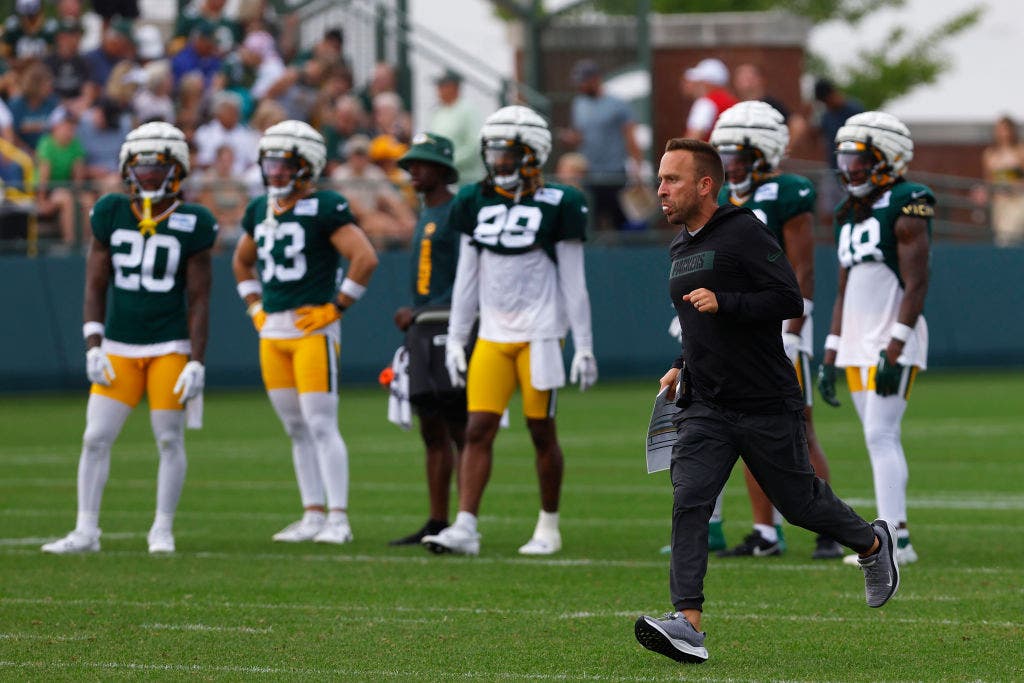
Packers DC Jeff Hafley says defenses are now better prepared for what offenses run on two-point plays. (Photo by Larry Radloff/Icon Sportswire via Getty Images)
First, some basic numbers on two-point conversions: NFL teams went for two 9.8% of the time after touchdowns last season, and of those attempts, a large majority — 72% — came in the fourth quarter. A kicker might be injured, or struggling, but normally, going for two is a scoreboard decision. If you’re down two late, of course you go for it for the chance to tie; if a touchdown puts you up by one, you go for two so an opponent’s field goal only ties the game, and so on.
Conversions take place from the 2-yard line, but teams don’t treat them like a goal-line play. Goal-line plays usually feature heavy personnel on both sides of the line, with multiple tight ends and extra defensive linemen. A two-point conversion generally has the offense in “11 personnel,” which features three receivers, one tight end and one back, a base look that brings the quarterback to the line with confidence.
The two-point conversion is somewhat predictably a passing play. Last season, 73% of two-point attempts were passing plays, and if you pull back to the past 10 years and nearly 1,200 conversion attempts, it’s a pass play 72.5% of the time. A third-and-2 play anywhere on the field is generally a passing down in the NFL — 61% were passing plays last season in that situation — but it’s even more so in the close quarters near the goal line.
“Most people aren’t willing to run the ball in that situation,” said Commanders defensive coordinator Joe Whitt Jr., whose defense had more two-point stops than any other team last season. “So where are most people going to attack? They’re going to try to attack your flats. Are they a flat left or flat right team? Are they going to try to move the pocket? Are they a crosser team? Once you realize that, there’s only so many things they’re going to do down there, so you rep it. … Now, if they run the ball, that’s what makes it a whole lot more difficult, but not a lot of people are going to do that.”
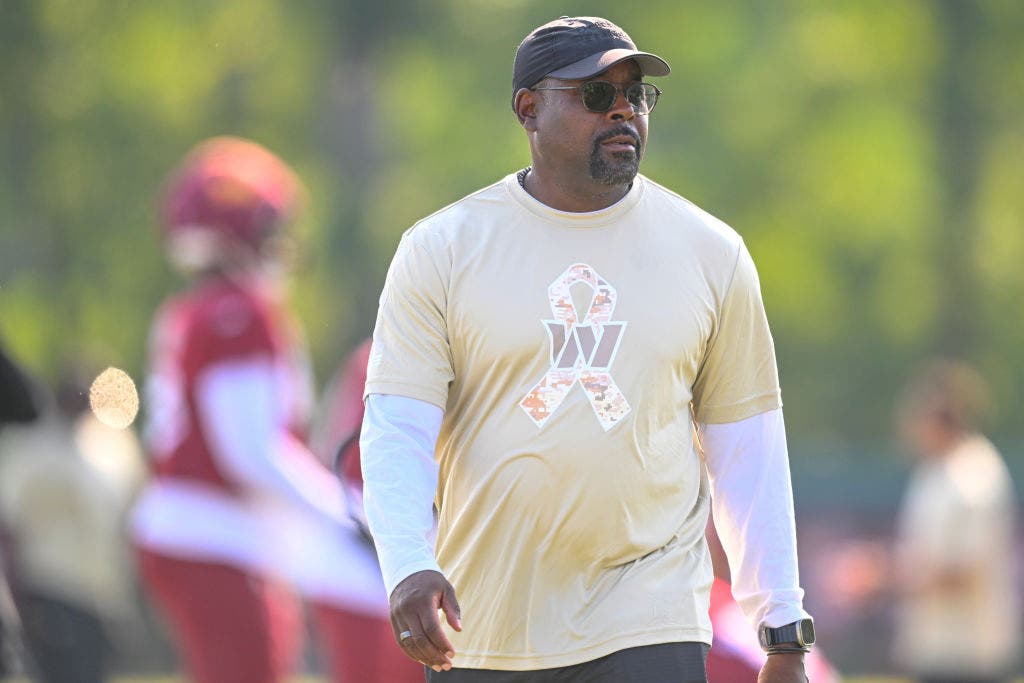
Commanders defensive coordinator Joe Whitt Jr.’s unit had more two-point stops than any other team last season. (Photo by John McDonnell/ for The Washington Post via Getty Images)
Though teams pass more than they run when going for two, there’s a higher success rate when they run. Last season, teams were successful on 50% of rushing conversion attempts, still a 10-year low, but better than the 37% success when passing, the lowest since 2007.
You might think the best two-point call has the quarterback rolling out for a pass/run option, but the threat of a quarterback scrambling for a two-point conversion is fairly low. In 135 total two-point attempts last year, only nine were quarterback runs, and only four of them succeeded — one each from Lamar Jackson, Jayden Daniels, Kyler Murray and Anthony Richardson. Traditional running back carries were more common and more successful, converting 14 of 26 attempts.
“Everybody is now very leery of keeping these quarterbacks from being able to get out of the pocket,” said Chargers defensive coordinator Jesse Minter, whose defense held opponents to zero conversions on two-point attempts all of last season. “That’s when, oftentimes, conversions happen. I just think defenses have an idea of what it takes to stop them, and offenses maybe being a little pass-happy down there has caused it to go down a little bit.”
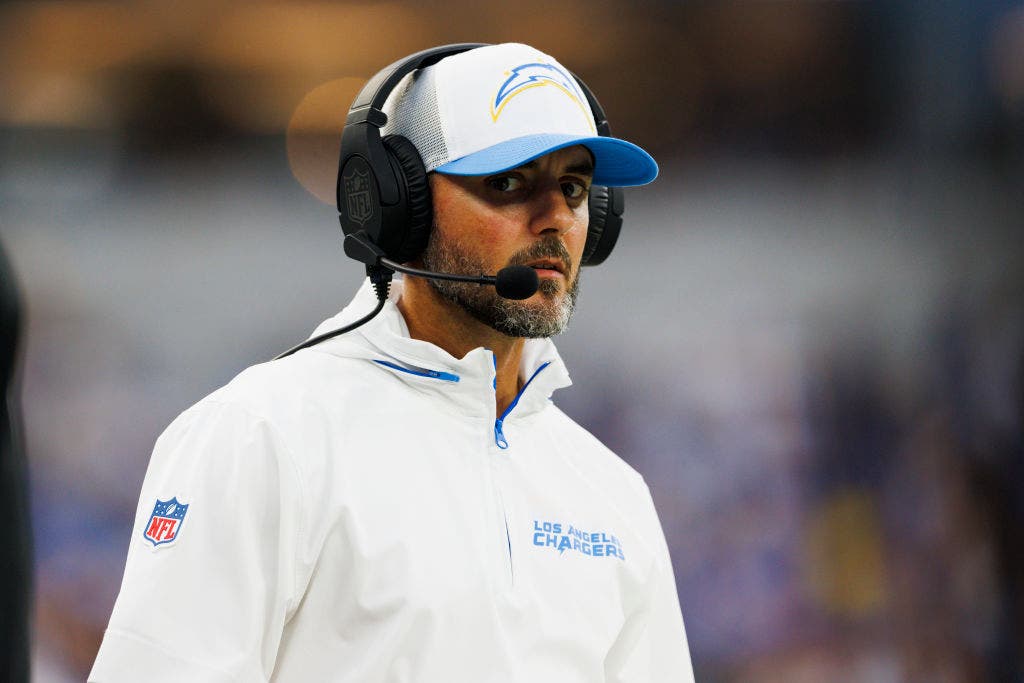
Chargers DC Jesse Minter’s defense didn’t allow a two-point conversion all last season. (Photo by Ric Tapia/Getty Images)
A defensive coordinator preparing a game plan can watch all the opposing playcaller’s calls in a short amount of time. Plus, a two-point call often follows the lead of a team’s third-down playcalling in the red zone. As Hafley points out, a single play has two points riding on it, but a third-down play in the red zone is essentially a four-point play, knowing a stop likely limits the drive to a field goal instead of a touchdown.
“I think the importance is huge, because ultimately it could cost you the game, right?” Hafley said. “I usually have guys go way back in that coordinator’s history and just pull up all the two-point plays, just like you prepare for anything situationally. We prepare for two-point the same way. Those are the most important plays, because you’re shifting points and sometimes momentum.”
The closest parallel to a two-point conversion is a third down or fourth down from the same 2-yard line. There were 58 such plays in the NFL last season, and teams scored on 47% of those, slightly higher than on two-point conversions. On those plays from the 2, the pass/run split was even more pronounced, with 47 pass plays against 11 runs, an 81% passing rate, even though a conversion is again more likely to be successful on run plays.
Though two-point attempts are still uncommon, they are more prominent than just a few years ago — and that’s by design. In 2015, the NFL moved its extra points from 15-yard kicks to 33 yards, a shift designed to make PATs less of a foregone conclusion. That lowered the success rate for extra points and encouraged going for two more often. Teams went for two on 6% of touchdowns or fewer every year from 2003-14, but that rate has hovered around 10% the past seven years.
It’s somewhat counterintuitive, but when it comes to conversions, closer doesn’t always translate to easier. When Buffalo went for two in the second quarter against the Chiefs in last year’s playoffs, the Bills took a point off the board after an offsides penalty on the extra point. Going for it from the 1, they tried a Josh Allen keeper and were stopped short, and that miss was followed by another failed two-point conversion later in the game. In the regular season last year, NFL teams went for two from the 1-yard line 14 times but only converted on six of those, a 43% success rate that’s barely ahead of the overall numbers from the 2.
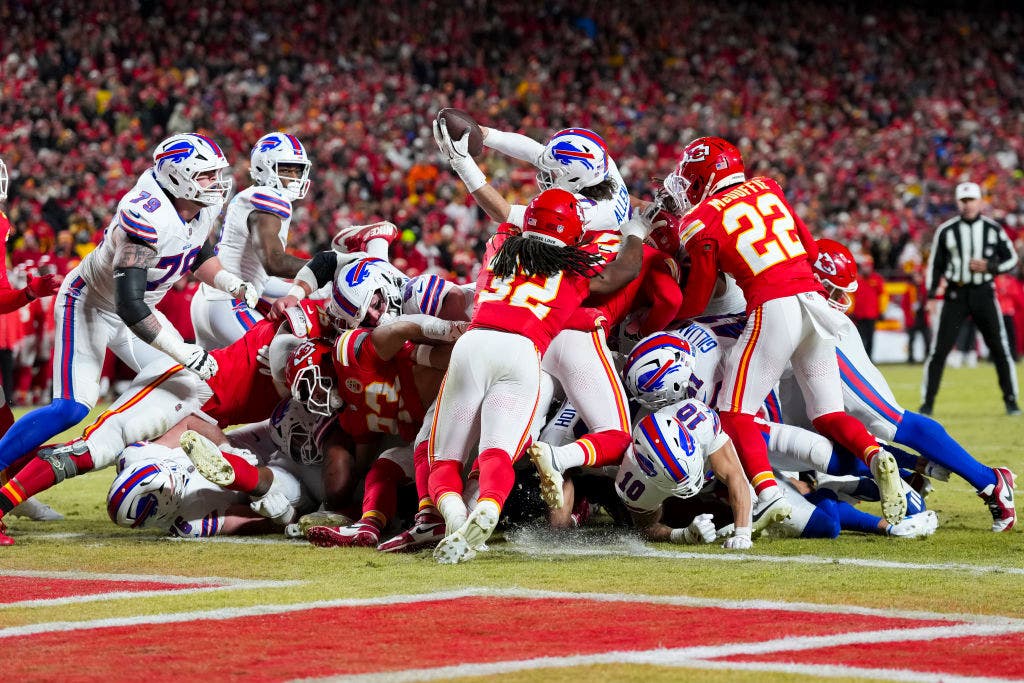
Josh Allen couldn’t get the ball over the goal line for a two-point conversion in the AFC Championship Game last season, one of two failed Buffalo conversions. The Bills ultimately lost 32-29. (Photo by Todd Rosenberg/Getty Images)
The 41% success rate on two-point conversions in last year’s regular season was validated in last year’s playoffs, when teams went 5-for-13, only 38% conversions, and two of those successful conversions came in the final three minutes of the Super Bowl, when the Chiefs were down by at least 20 points.
Whitt said part of the Commanders’ success against two-point conversions is that they rep it in practice every week. They had nine two-point attempts against them — allowing only one conversion — and lined up in the same defensive look on six of the nine plays. They install two two-point calls each week, but the second is just in place for if a team goes for two a second time, to give another look.
“Those are game-winning plays,” Whitt said. “DQ [Dan Quinn] does a great job of talking to the team about winning moments when it comes down to it. We rep it as part of our red zone defense when we get into the low red, and we talk about it once it’s closer to the game: ‘This is what we’re going to go with.'”
Even more than usual, NFL defenses will try to swarm an opponent’s top offensive weapon at the snap on a two-point conversion, forcing a quarterback to look in another direction. Of the 12 NFL players to catch nine or more touchdowns last season, only Jacksonville rookie Brian Thomas Jr. was able to score on a two-point conversion. Taking away the most logical first target is only part of the challenge.
“It’s hard to defend,” Hafley said. “They’re bang-bang plays that could go either way. Sometimes, you’re in the right call, and you have a guy sitting all over it and you cover it, but the quarterback scrambles around, things go off schedule and they make a play.
“There’s a lot that goes into it down there.”
Greg Auman is an NFL Reporter for FOX Sports. He previously spent a decade covering the Buccaneers for the Tampa Bay Times and The Athletic. You can follow him on Twitter at @gregauman.
Want great stories delivered right to your inbox? Create or log in to your FOX Sports account, and follow leagues, teams and players to receive a personalized newsletter daily!
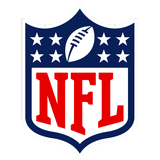
Get more from National Football League Follow your favorites to get information about games, news and more








